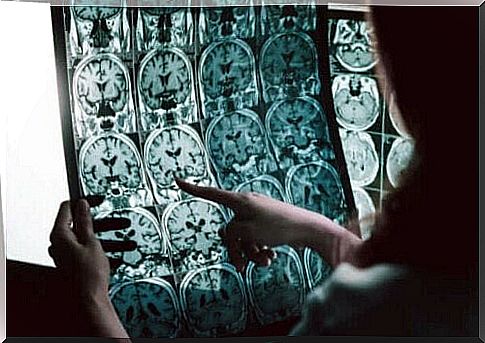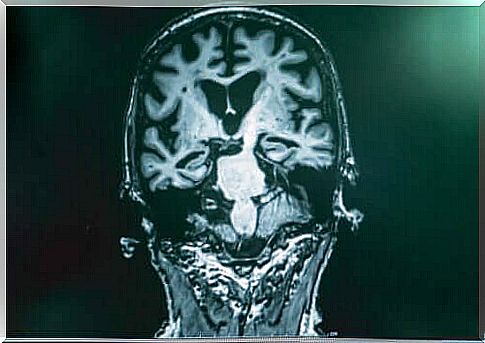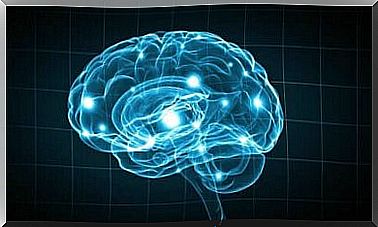Brainwave Stimulation For People With Alzheimer’s

Do you know what gamma waves are? Are you aware of the benefits of wave brain stimulation as a treatment for patients with Alzheimer’s disease? Advances in science and technology and their conditions have allowed the development of new treatments that are literally a ray of sunshine for these patients.
Alzheimer’s disease remains a mystery. It is a disease in which doctors can still only confirm deaths. The origin is still unclear.
No therapy, medication or other form of treatment has yet been found to slow or reverse this disease. Therefore, any small progress that slows progression or even improves cognition is a great achievement.

Patients with Alzheimer’s: What are gamma waves?
These are neural oscillation patterns whose frequency range is between 20 and 100 Hz. They usually manifest around 40 Hz.
These waves reflect high brain activity. Higher than that reflected by beta waves, which are those that are present when a person is in deep thought. These waves indicate that the brain is working “at full speed”, activating different brain regions.
In addition, some believe that these waves are the ones that initiate complex executive functions or higher mental activity. These are complex activities such as orientation, attention, awareness and reasoning, and require coordinated activation of neurons in different brain areas. All for the integration of different types of information that can make sense of reality.
However, it seems that these waves not only reflect this type of activity, but also that it has nothing to do with concentration. They also appear to be related to explosive behavior, anxiety and fear.
What does wave brain stimulation do for people with Alzheimer’s?
As we mentioned at the beginning, the origin of Alzheimer’s is still unknown. Researchers are aware of certain pathophysiological changes that are characteristic of the disease. For example, amyloid-beta protein deposits that end up forming plaques around neurons and rendering them unusable. Also the formation of intracellular neurofibrillary tangles and the presence of phosphorylated tau protein.
According to the studies, the gamma activity in the brain of patients with Alzheimer’s changes. This can contribute to deficits in complex cognitive functions, such as those mentioned above.
Based on this finding, the Massachusetts Institute of Technology (MIT) designed a study with genetically modified mice to produce an excess of beta-amyloid, ie mice with Alzheimer’s.
How to increase gamma activity in the brain and health benefits
The experiments were led by Li-Huei Tsai, director of the Picower Institute for Learning and Memory at MIT. They consisted of stimulating the activity of the gamma waves of the mice with Alzheimer’s by means of a flashing light at 40 Hz.
The results showed that the amount of beta-amyloid plaques and phosphorylated tau proteins was drastically reduced. Not only that, the waves improved the activity of the microglia, the cells responsible for cleaning waste in the brain.
In this first experiment, they limited themselves to stimulating the gamma activity of the Cortex visualis . However, they wanted to go further. Thus, they tried to induce gamma oscillations when exposed to 40 Hz tones. This, in addition to reducing the amount of beta-amyloid in the auditory cortex, they also reduced it in the hippocampus. This region is essential for memory formation.
Not happy with the result, the researchers decided to see what effect combines both types of visual and auditory stimulation. As a result, they found that not only were the results positive, but were twice as beneficial as each of the stimulation modalities alone. Even the response from the microglia was much stronger.

Further research on brain wave stimulation
Tsai and her colleagues found that the beneficial effects of gamma stimulation faded in rodents who underwent stimulation and then rested for a week. This may indicate that this type of therapy needs to be intensive to be effective.
This technique has only been tested in mice with Alzheimer’s, although tests with healthy people have already begun. Recently, it began to be tested in patients with early-stage Alzheimer’s.
The most important puzzle remains to be solved: will a human brain behave in the same way as a rodent brain does? Hopefully!
What do you think it will mean to discover that this type of stimulation can actually reduce or even stop the symptoms of Alzheimer’s? Some think it would be a revolution. This is because there is still no effective treatment for the most prevalent dementia in the world.








